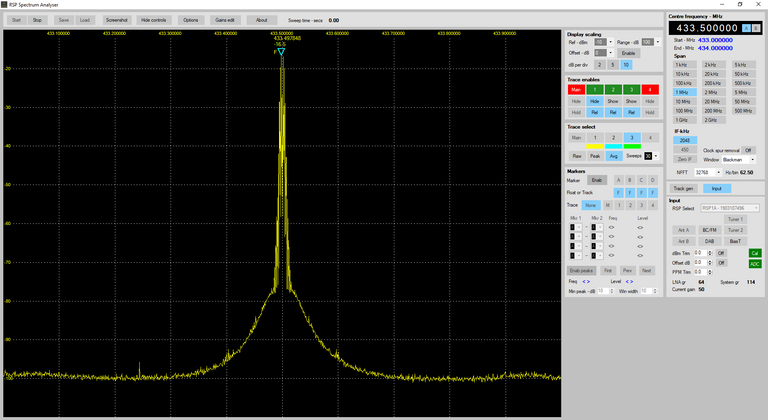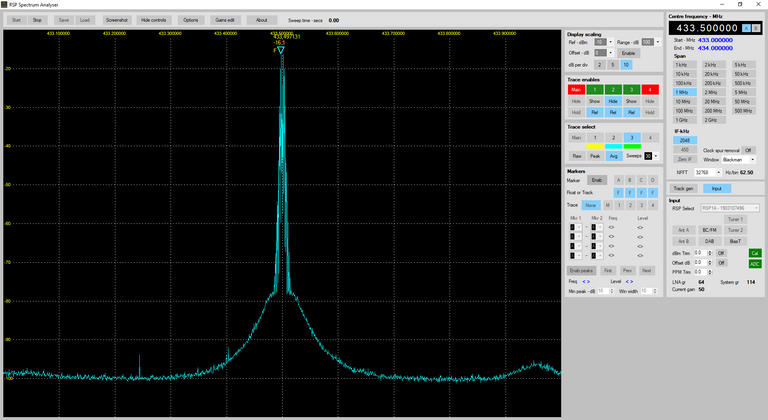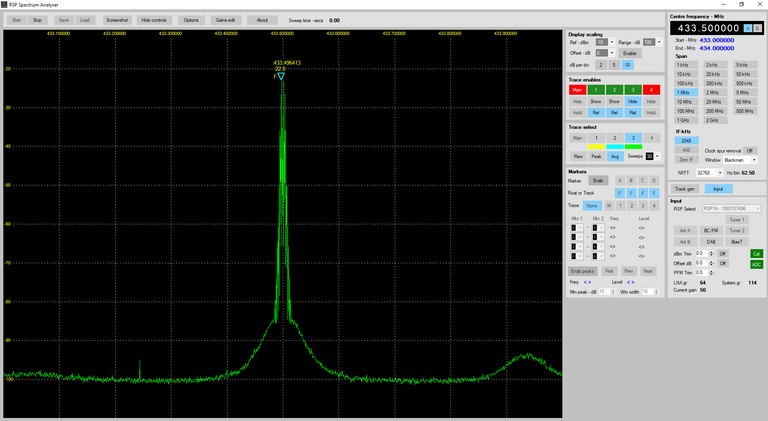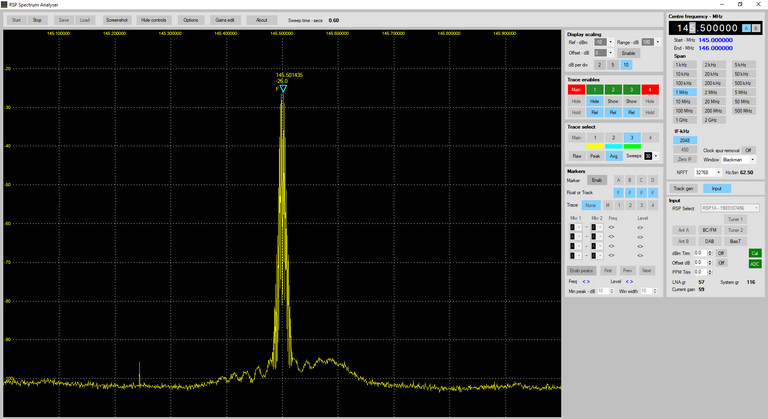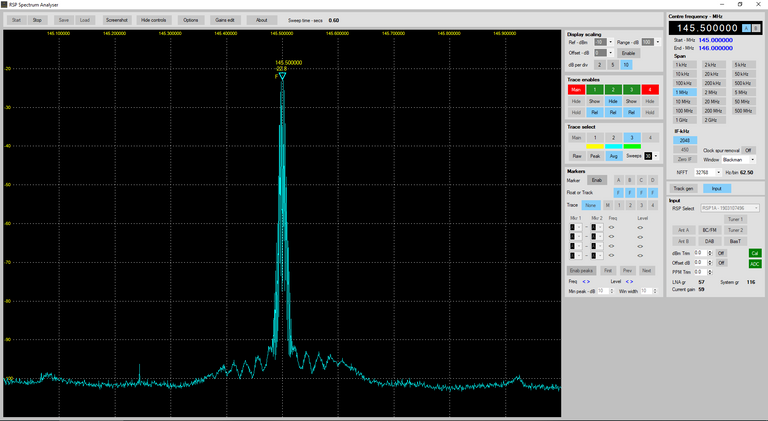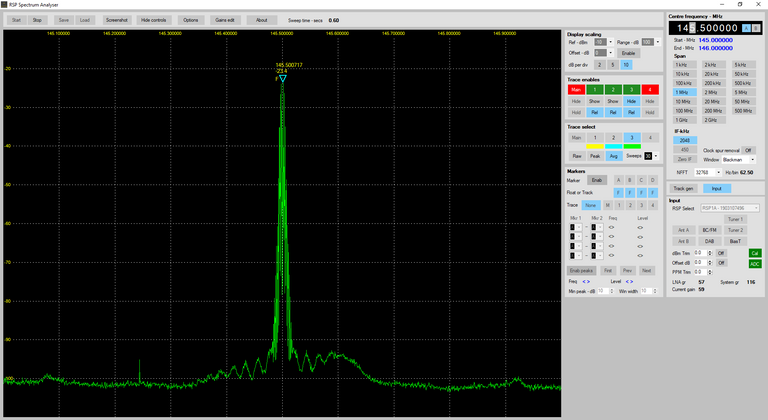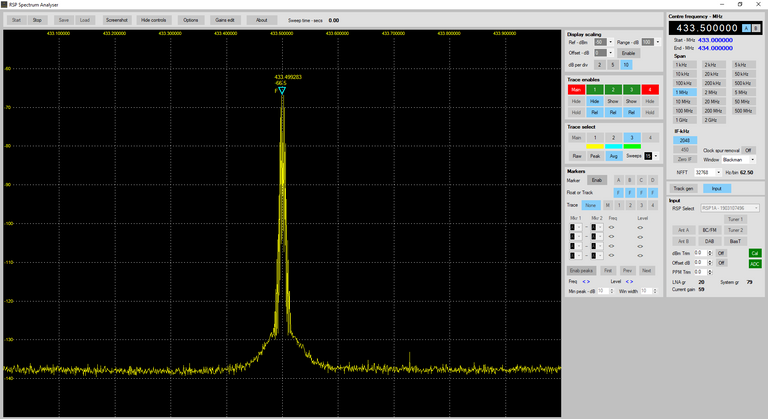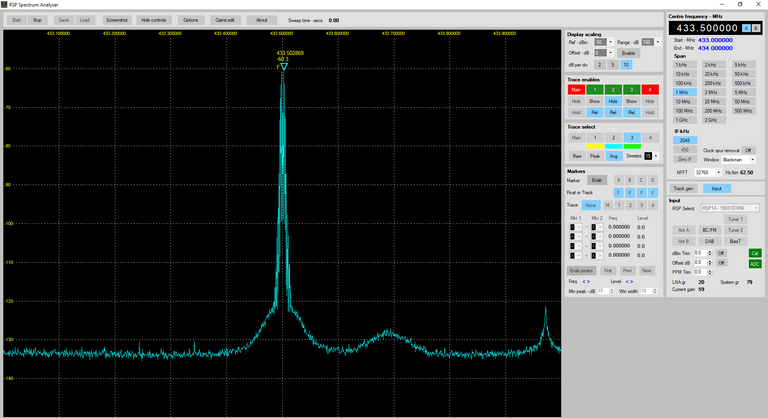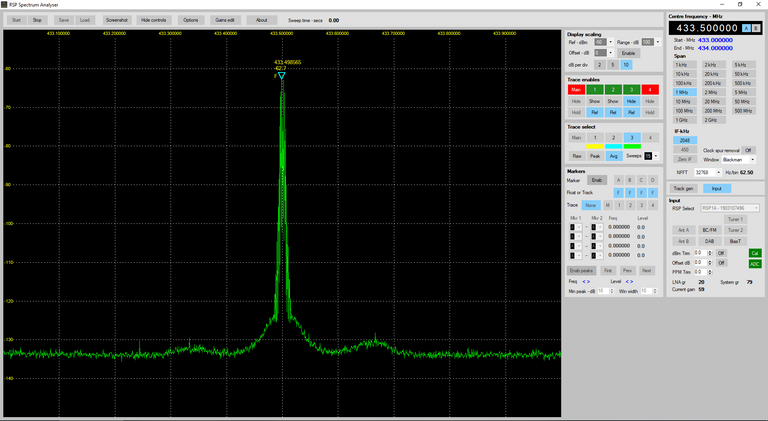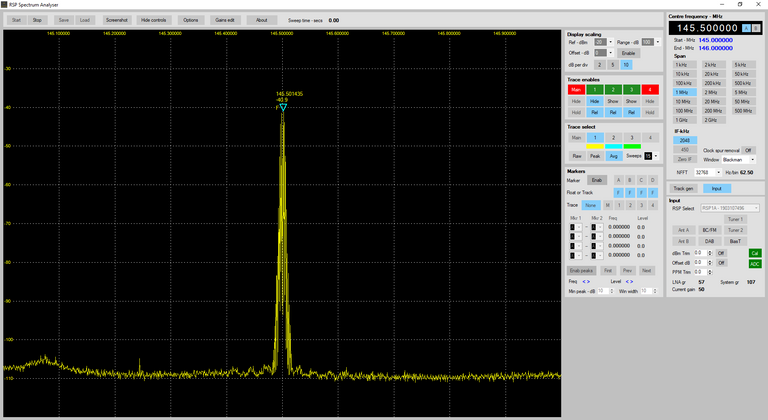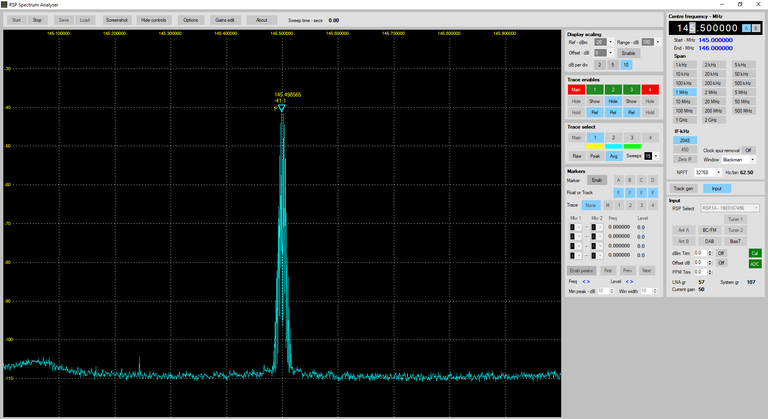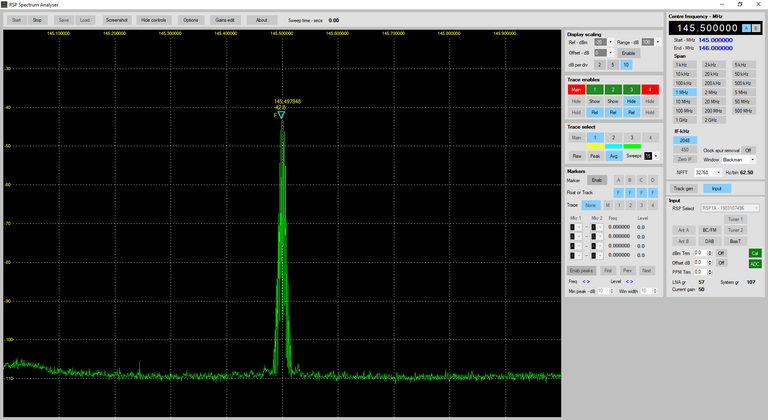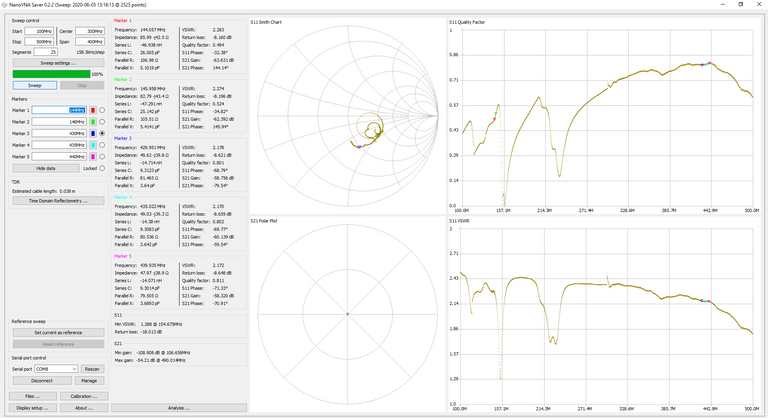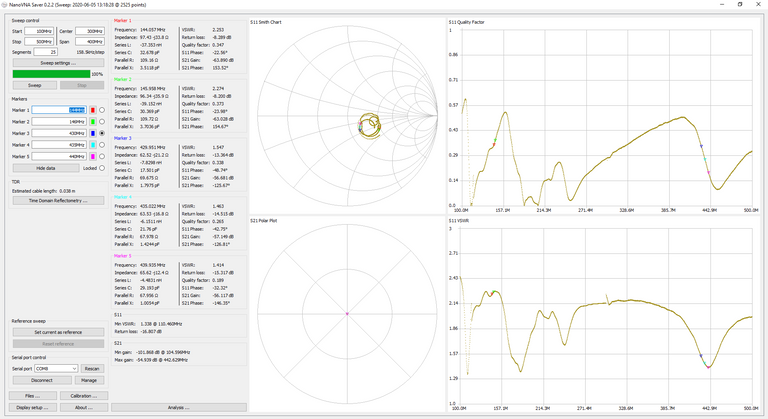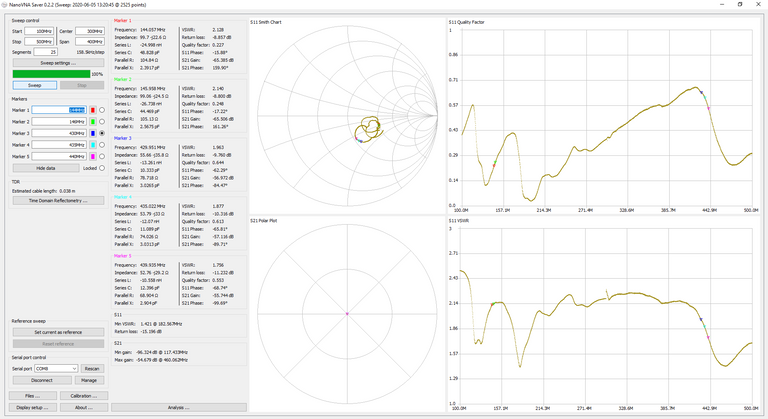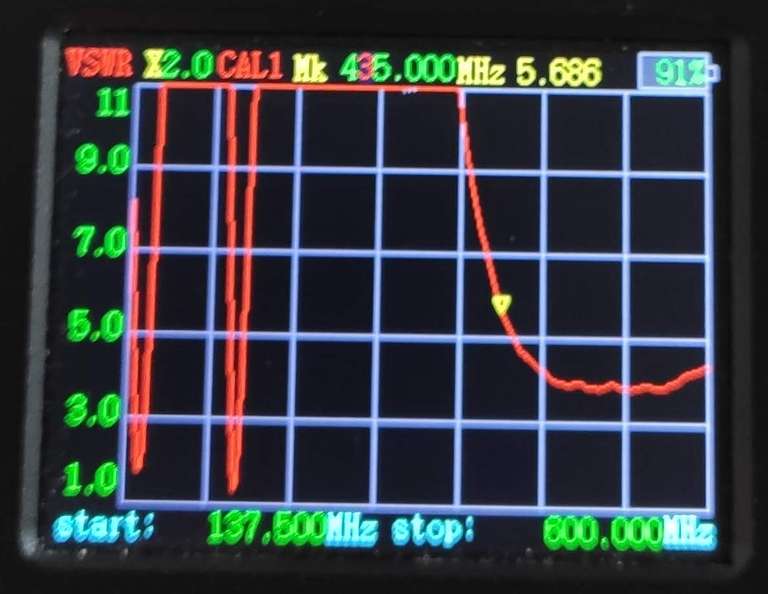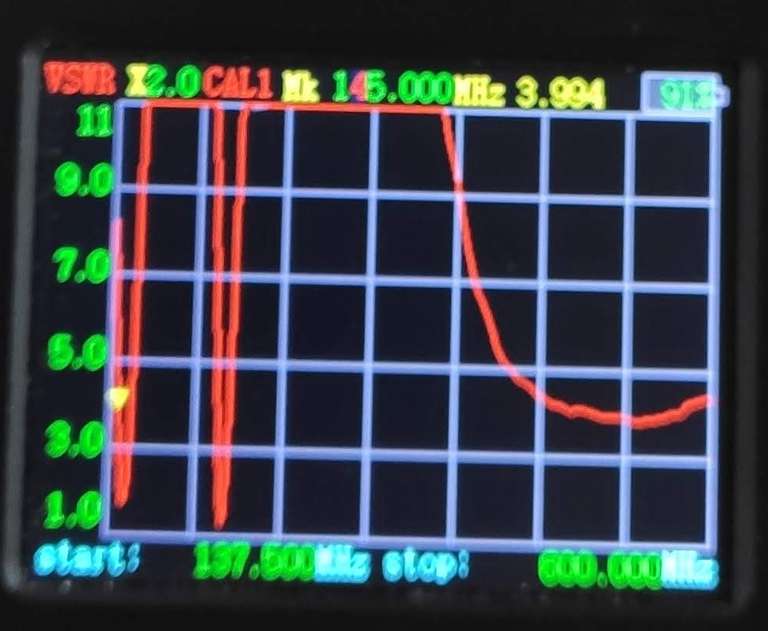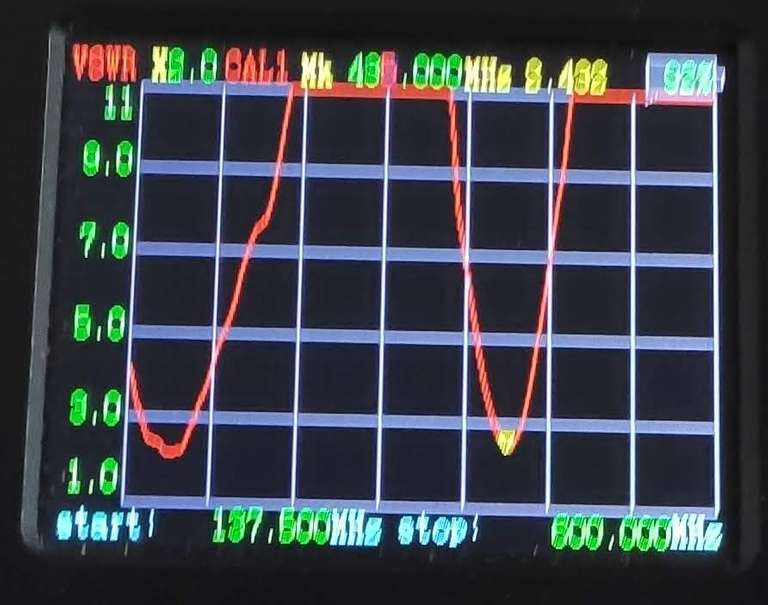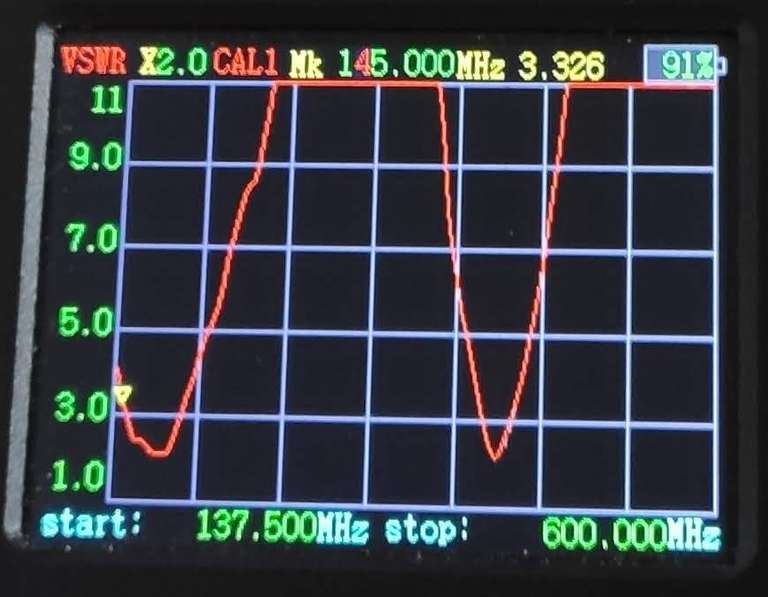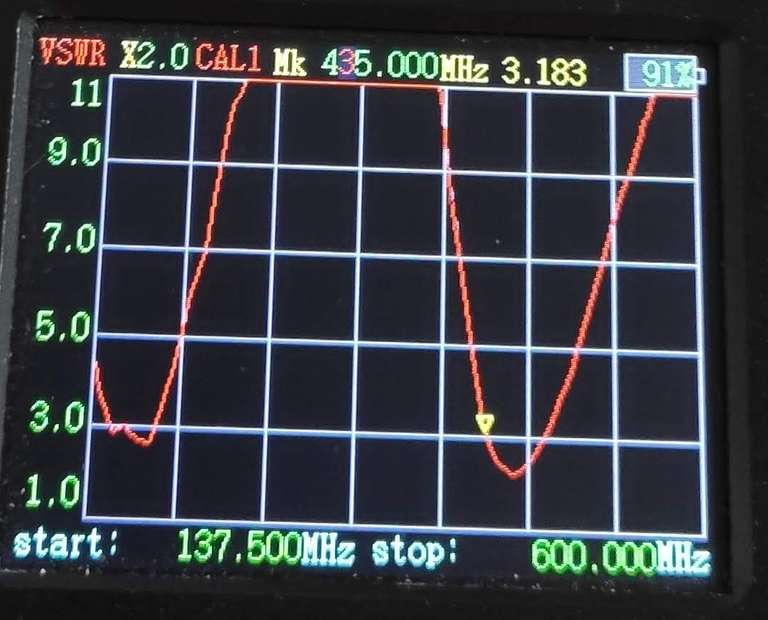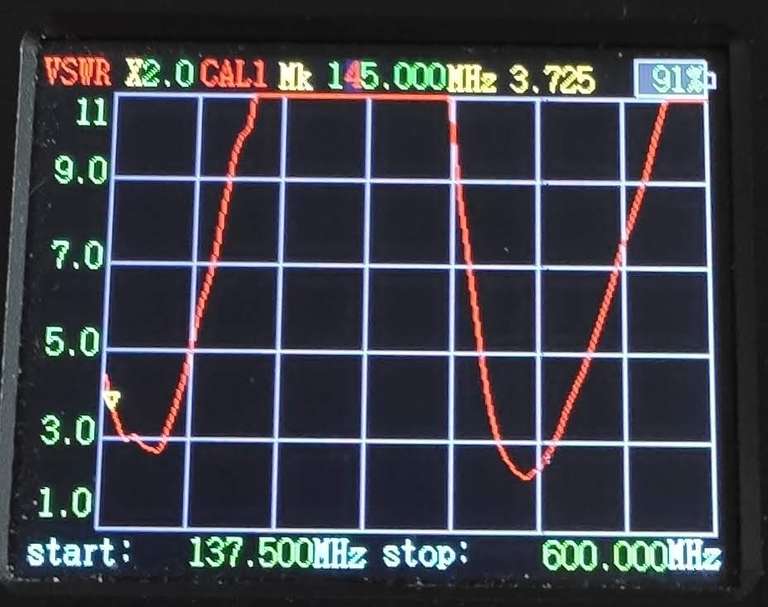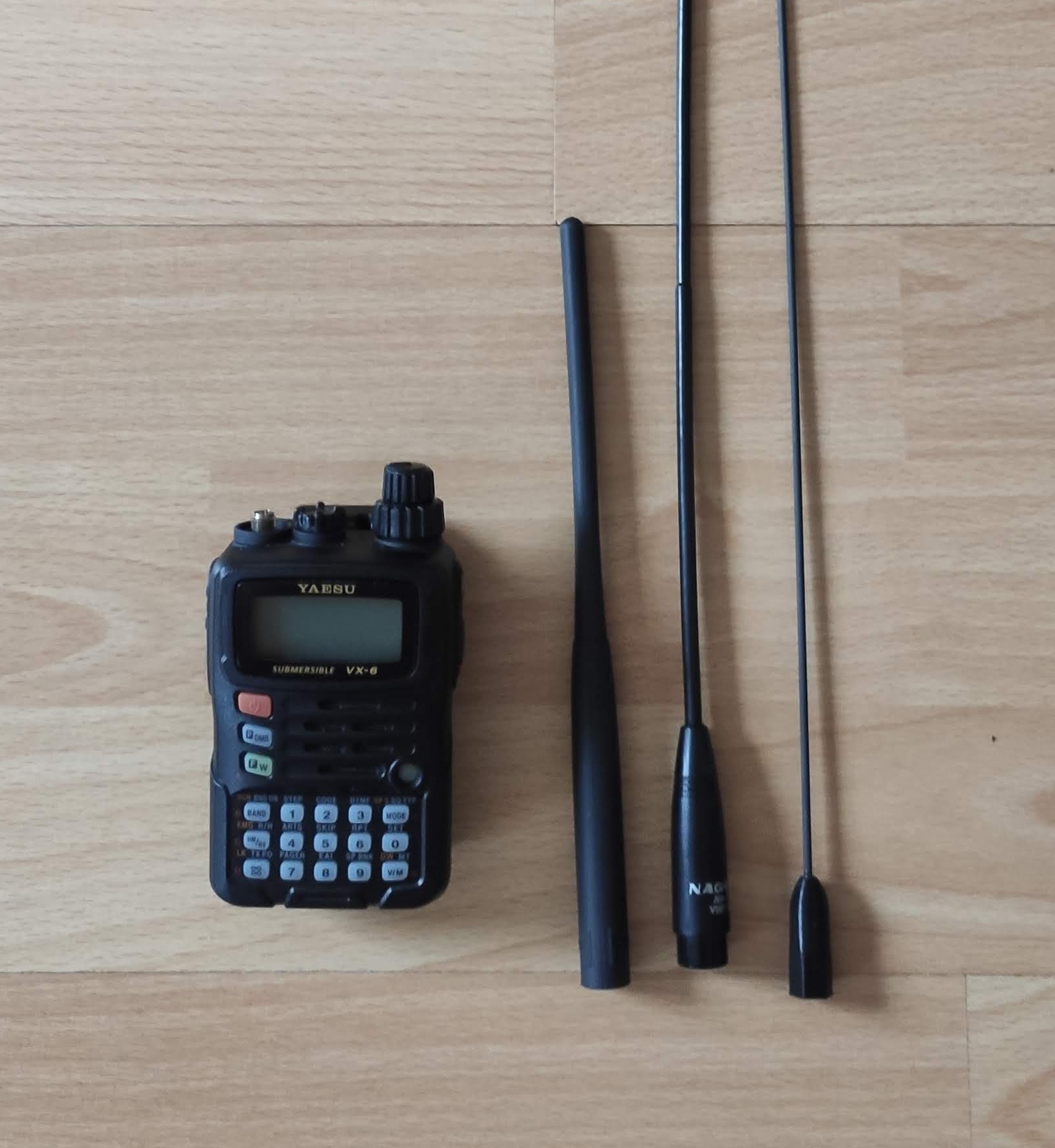
Yaesu vs Nagoya vs Signal stick
Table of Contents
Equipment
- Yaesu VX-6 to generate a constant signal (1750Hz tone)
- SDRPlay RSP1A
- NanoVNA
- N1201SA Vector Impedance Analyzer
Antennas to test
I have three antennas I want to compare. The stock antenna that shipped with the radio, a Nagoya NA-771 (hopefully original) and a Super elastic signal stick.
Transmission test
The first thing I wanted to know, is if there is a difference in signal strength coming from the antenna. I used the radio at a defined position with the three antennas (one after another) and used the SDRPlay to record the spectrum. The absolut value don't matter and aren't calibrated in any form, it is just for comparision between each other.
Transmission frequencies were 433.5 MHz and 145.5MHz.
70cm
2m
Conclusion
| 70cm | 2m | |
| Yaesu | -16.5dB | -26dB |
| Nagoya | -16.1dB | -22.8dB |
| Signal stick | -22.8bB | -23.4dB |
The Nagoya seems to perfom the best. The Signal stick looks bad at 70cm and the Yaesu is a bit worse at 2m.
Receive test
I switched the antennas. So a small antenna was fitted to the Yaesu VX-6 and the 3 test antennas were connected to the SDRPlay. I transmitted a constant tone and captured the spectrum again to see the different receive performances.
70cm
2m
Conclusion
| 70cm signal | 70cm noise | 70 cm signal -noise | 2m peak | 2m noise | 2m signal-noise | |
| Yaesu | -66.5dB | -138dB | 71.5bB | -40.9dB | -108dB | 67.1dB |
| Nagoya | -60.3dB | -133dB | 72.7dB | -41.1dB | -109dB | 68.3dB |
| Signal stick | -62.7dB | -133dB | 70.3dB | -42.6dB | -109dB | 66.4dB |
The differences aren't big, if we had to make a conclusion out of this, then the Nagoya performs the best, and the signal stick worst.
Measuring SWR with NanoVNA
I measured the 3 antennas with the NanoVNA via the PC software.You can see in the plot small markers on the left for the 3m band and three markers on the right for the 70cm band.
There was a significant calibration error. The absolut numbers are way to low and the curve of the graphs can also not fully be trusted.
In the following table you can see the SWR value for the 70cm and 2m band.
| 144MHz | 146MHz | 430MHz | 435MHz | 440MHz | |
| Yaesu | 2.28 | 2.27 | 2.18 | 2.17 | 2.17 |
| Nagoya | 2.25 | 2.27 | 1.54 | 1.46 | 1.41 |
| Signal Stick | 2.13 | 2.14 | 1.93 | 1.89 | 1.76 |
For al three antennas you can see that the resonant points aren't at the "right" places. I am not sure if this is an error while measuring or what the problems are. The Nagoya got the best values.
Measuring SWR with N1201SA
I measured the 3 antennas with the N1201SA . The plots are pretty blurry but the numbers are again in the table below.
| SWR at 145MHz | SWR at 435MHz | |
| Yaesu | 4.0 | 5.7 |
| Nagoya | 2.4 | 3.2 |
| Signal stick | 3.2 | 3.8 |
Note that the values here are much higher then with the NanoVNA. Obviously not both can be right. But the tendenciec are the same. The Nagoya also performed best.
General conclusion
What can we conclude with the data? All measurements point to the Nagoya as the best of my 3 antennas. Are these data representative for all of these antennas? A clear no! I have no idea if the Nagoya was really original and all antennas can have production variations, which could change the resonant freuqencies.
Can I trust the measurement
I hope that I didn't make any systematic errors, but:
- I have no formal training in all this
- I have the cheapest devices to measure all this
- I did the test at home, so the distances were way to close, with to much stuff in the way to be reliable and trustworthy (I see them more as a hint)
- I would categorise this as evicencial evidence at best, definitely not reliable facts
- Both VNAs show a vastly different SWR, something is wrong here with calibration, not both can be right. But the tendecies are the same
